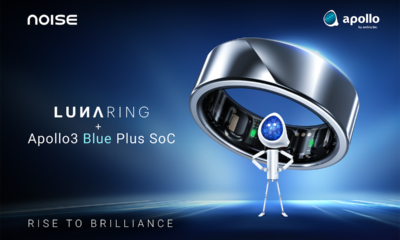
The semiconductor industry continues to thrive at a rapid pace, powering innovation across a vast array of sectors. In this dynamic landscape, certain companies have emerged as leaders, shaping the market with their cutting-edge technology and strategic prowess.
- Intel remains a major player, known for its sophisticated processors.
- AMD has made substantial strides in the AI technology realm.
- SK Hynix is a critical provider of memory and networking solutions.
These companies, along with numerous others, are constantly innovating the boundaries of semiconductor design, guaranteeing a future where technology continues to transform our world.
Power Efficiency Pioneers: The Rise of Low Power Semiconductors
The semiconductor industry continues to advance at a remarkable pace, driven by the ever-growing demand for energy-efficient devices. Low power semiconductors are fundamental in this revolution, enabling a new era across diverse sectors.
From smartphones and laptops to wearable electronics, these specialized transistors are enhancing battery life. As the demand for mobile computing increases and the need for sustainability intensifies, low power semiconductors are poised to shape the future.
Recent breakthroughs in materials science are constantly pushing the boundaries of what is possible, leading to devices that consume significantly less power. The trajectory of this technology is promising, paving the way for a more sustainable and connected world.
Ultra-Low Power Microcontrollers : Pushing the Limits of Energy Savings
As electronics shrink and become more integrated into our daily lives, the demand for ultra-low power microcontrollers expands exponentially. These miniature marvels are designed to operate on minuscule amounts of power, enabling them to perform for extended periods using little external charging. From wearable sensors to IoT applications, ultra-low power microcontrollers shape various industries by delivering exceptional performance in battery-operated setups.
Engineers are constantly stretching the thresholds of energy conservation with groundbreaking approaches. State-of-the-art fabrication processes, low-power software, and novel power management techniques are under development to further reduce power draw.
- These advancements in ultra-low power microcontrollers promises a bright future for a more diverse set of uses in fields such as healthcare.
- As a result, we can expect to see highly capable systems that function seamlessly in demanding conditions.
Navigating the World of Low Power MCUs: A Comprehensive Guide
Embarking on the journey into the realm of low power microcontrollers (MCUs) can be both intriguing. These tiny processors are revolutionizing numerous applications, from wearable technologies to industrial Embedded systems automation. To effectively navigate this fascinating landscape, a comprehensive understanding of key concepts is indispensable.
Initially, let's understand what constitutes a low power MCU. These MCUs are designed to minimize energy consumption, achieving this through advanced architectural features and operational modes.
- Consequently, they stand out in applications where battery life is critical
- Moreover, low power MCUs often integrate peripherals tailored for specific tasks, streamlining overall system performance.
Choosing the suitable MCU for your project relies on factors such as required processing strength, memory constraints, and of course, power consumption targets.
Novel Developments in Energy-Efficient Processors
The landscape of computing is constantly transforming with a surge in demand for devices that are both powerful and energy frugal. Ultra-low power processing has emerged as a critical focus, driving scientists to explore innovative designs that minimize power draw. Recent breakthroughs in semiconductor engineering are paving the way for transformative advancements in ultra-low power processing, enabling reduced carbon footprint and unlocking new possibilities in a diverse set of applications.
- Sensors
- Mobile Computing
- Cloud Infrastructure
Effects of Low Power Semiconductors on IoT Devices
The proliferation of the Internet of Things (IoT) has fueled a significant demand for low power semiconductors. These efficient devices support a wide range of applications, from smartsensors to industrial automation. By reducing energy consumption, low power semiconductors increase operational time, making them critical for IoT deployments where frequent connectivity is required.
Unlocking Performance with Minimal Energy Consumption: The Advantages of Low Power Solutions
In today's rapidly evolving technological landscape, achieving optimal performance while minimizing energy consumption is paramount. Integrating low power solutions presents a compelling pathway to accomplish this objective. By exploiting cutting-edge hardware and software advancements, developers can engineer systems that deliver exceptional performance while conserving energy expenditure.
The advantages of low power solutions are manifold. Firstly, they promote extended battery life in portable devices, improving user experience and autonomy. Secondly, low power frameworks can significantly lower operational costs by minimizing energy usage.
Finally, embracing low power solutions indicates a commitment to environmental responsibility, aligning with the growing global priority on sustainable development.
Beyond Battery Life: Applications of Ultra-Low Power Technology
The realm of ultra-low power technology extends far extending the confines of mere battery life. While extending the lifespan of devices is a crucial benefit, this transformative field is paving the path for a diverse array of applications that were once considered unfeasible. From implantable devices to remote systems, ultra-low power technology is disrupting industries and pushing the boundaries of what's possible.
- Consider a world where tiny, self-powered sensors analyze our health in real time, providing invaluable insights to doctors and researchers.
- Picture a future where intelligent systems optimize energy consumption and improve efficiency on a global scale.
- Reflect upon the potential of ultra-low power technology to facilitate sustainable agriculture, revolutionizing food production and security.
These are just a few examples of the unbounded possibilities that lie ahead. As research and development advance, ultra-low power technology is poised to shape our world in profound and unexpected ways.
Top Contenders in the Ultra-Low Power Microcontroller Market
The ultra-low power microcontroller market is experiencing explosive growth, driven by the increasing demand for energy-efficient devices in applications such as wearable electronics and IoT sensors. This dynamic landscape has sparked intense competition among numerous manufacturers.
Some of the leading contenders include:
- NXP Semiconductors
- Atmel
- Cypress Semiconductor
These entities are constantly innovating new products to optimize power consumption and performance, catering to the evolving needs of various industries.
Ambiq VP of AI Discusses heartKIT Award Win at Embedded World 2025
Driving Efficiency: Leading Manufacturers of Low Power MCUs
In the ever-evolving landscape of embedded systems, performance reigns supreme. Manufacturers are relentlessly pushing the boundaries, crafting low-power microcontrollers (MCUs) that seamlessly integrate into a extensive applications. From wearable devices to industrial automation, these power-sipping chips are revolutionizing how we utilize technology. Amongst the leading contenders in this domain, names like STMicroelectronics consistently manufacture cutting-edge solutions that redefine industry standards.
Their commitment to innovation is evident in their extensive portfolios of MCUs, meticulously crafted for specific applications. With features such as ultra-low power consumption, high processing performance, and integrated peripherals, these chips empower developers to construct innovative solutions that are both reliable.
Smart Design for a Sustainable Future: The Role of Low Power Semiconductors
As our world increasingly relies on technology, the demand for energy-efficient solutions has never been greater. Low power semiconductors play a crucial role in this endeavor, enabling the development of smart devices that minimize their environmental impact. These miniature marvels leverage cutting-edge design principles to reduce energy consumption, paving the way for a more sustainable future. By incorporating low power semiconductors into ubiquitous applications, we can endeavor to create a world where technology and sustainability go hand in hand.
Facebook | Linkedin | Twitter | YouTube Loni Anderson Then & Now!
Loni Anderson Then & Now! Raquel Welch Then & Now!
Raquel Welch Then & Now! Kane Then & Now!
Kane Then & Now! Brooke Shields Then & Now!
Brooke Shields Then & Now! Sarah Michelle Gellar Then & Now!
Sarah Michelle Gellar Then & Now!